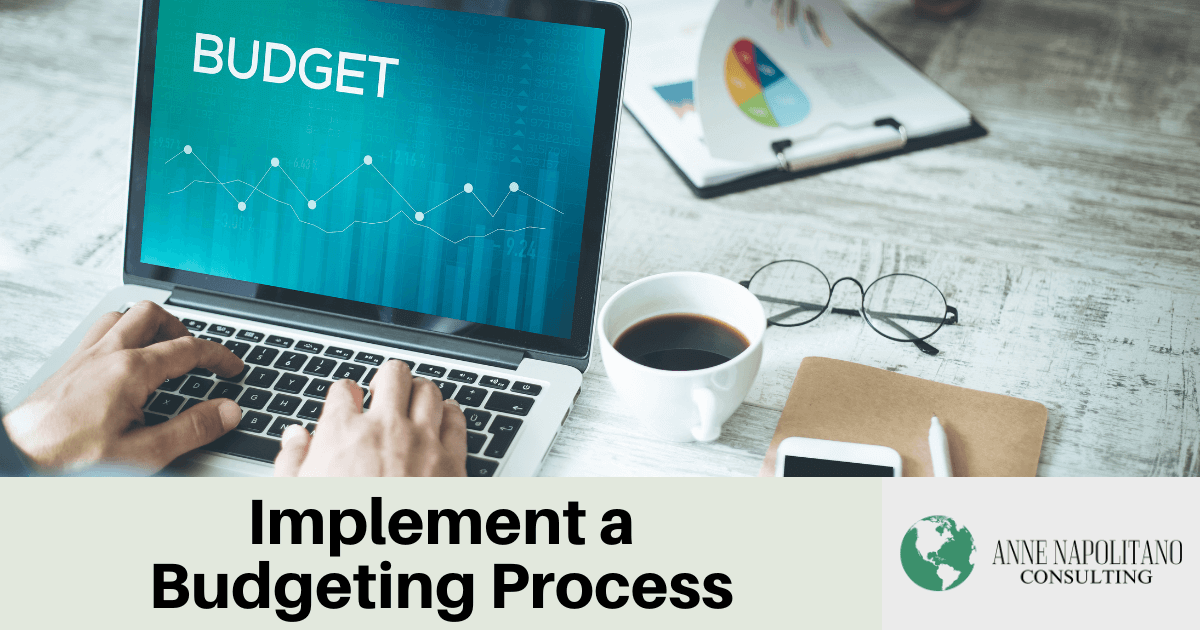
Creating and implementing a budgeting process is one of the most important practices you can have in your business. Yet a surprising number of businesses do not have a formally documented budgeting process in place.
Even though it’s an essential component of the financial success of your business, the budgeting process can be stressful for even the most experienced business owners. We’re here to help by giving you some best practices for implementing a budgeting process for your business.
What is a Budgeting Process?
Simply put, a budgeting process is a methodical approach to creating a financial plan for your business, which involves planning how you will allocate your financial resources over a specific period, usually a year. This plan takes into account your expected revenue and expenses, and it helps you to prioritize your spending and identify areas where you can cut costs. Once the budget is created, it’s important to monitor actual performance against the budget on an ongoing basis and make adjustments as needed. The budgeting process allows you to track your financial progress, measure your performance against your targets, and make informed decisions about your business’s future.
Benefits of Implementing a Budgeting Process:
Implementing a budgeting process provides businesses with several benefits, including:
- Better Financial Management: A budget provides you with a clear understanding of your business’s expected income and expenses, enabling you to manage your business’s finances more effectively. By monitoring actual results against the budget, you can identify areas of overspending or underspending and make adjustments as needed.
- Improved Decision-Making: A budget provides the information you need to make informed financial decisions. You can evaluate the potential impact of different scenarios, such as investing in new equipment or hiring additional staff, on your business’s financial performance.
- Increased Accountability: An effective budgeting process allows you to establish financial targets and expectations for your business, making it easier to hold employees accountable for their performance. By monitoring actual results against the budget, you can identify areas where employees are falling short and provide additional training or support as needed.
Best Practices for Implementing a Budgeting Process
Here are three best practices for implementing a budgeting process for your business.
1. Create a Budget
Creating a budget is the first and most important step in implementing a budgeting process. A budget is a detailed financial plan that outlines a company’s expected income and expenses for a given period. When creating a budget, consider your business’s historical financial performance, industry benchmarks, and future plans. The budget should be realistic and based on accurate financial data and projections.
When creating a budget, be sure to involve key stakeholders, such as department heads and financial professionals. These stakeholders can provide valuable insights into expected income and expenses and help ensure the budget is accurate and comprehensive. A detailed and specific budget provides your business with a roadmap for financial success, enabling you to manage your business’s finances more effectively and make informed financial decisions.
2. Monitor Actual Results Against the Budget
Monitoring actual results against your budget is critical for effective financial management. Track your business’s actual income and expenses regularly, preferably monthly, and compare them to the budgeted amounts. Any discrepancies should be investigated and resolved promptly. By monitoring actual results against the budget, you can identify potential issues and make adjustments as needed.
Use a consistent and reliable system, such as accounting software, to track your business’s financial performance. This system should be updated regularly with accurate and timely financial data. By monitoring actual results against the budget, you can identify areas of overspending or underspending and take corrective action as needed.
3. Make Adjustments as Needed
A budget is a living document that should be updated regularly based on actual results and changing business needs. If actual results differ significantly from the budgeted amounts, you should investigate the reasons for the discrepancy and make adjustments as needed. Adjustments may include reducing expenses, increasing revenue, or revising the budgeted amounts.
Regularly review your budget and financial performance to ensure that your business is on track to meet financial goals. Be sure to consider external factors that may impact financial performance, such as changes in the economy or industry trends. By making adjustments to your budget as needed, you can improve your business’s financial performance, mitigate financial risks, and make sound financial decisions.
Partners in Your Success
Implementing a budgeting process is critical when it comes to accounting best practices. Creating a detailed and specific budget, monitoring actual results against the budget, and making adjustments as needed are essential for implementing a budgeting process.
We know creating and implementing an effective budgeting process for your business can be complex and overwhelming. We’re here to help. At Anne Napolitano Consulting, our team of experts can help you implement a budgeting process that works for your business. Contact us today to schedule your free consultation.
